Definition
A Take-off/Go Around (TO/GA) is an autopilot/autothrottle setting that activates the take-off or go-around thrust. Usually located on the thrust levers, they can be activated by depressing a switch or by manually moving the thrust levers to the appropriate position (depending on the aircraft type).
Representative | Source
The switch is the same for both take-off (TO) and go-around (GA) modes and by pressing the TO/GA switches when the autothrottle is engaged, the thrust lever servo-actuators are activated and they advance the thrust levers at a preset rate to reach the position for take-off or go-around.
Illustrative | Pinterest
Take-off mode (TO)
Advancing the thrust levers to the TO/GA position during take-off, commands the engines to increase their RPM to the calculated N1 or engine pressure ratio (EPR). Since most aircraft today can perform a Reduced Thrust Take-off in which the power needed by the engines for take-off is pre-determined by the crew based on several factors such as runway length, wind speed, temperature, and the weight of the aircraft, it additionally prevents wear and tears on the engines by only using as much power as is actually required to meet takeoff and climb obstacle clearance.
Illustrative | SKYbrary
Go-Around mode (GA)
Initiating the transition of the autopilot/autothrottle system from approach mode to go-around mode is yet another very important function of the TO/GA mode.
The “all engines” go-around is a standard procedure which is executed if the captain deems it necessary and it may be due to several reasons- unstable, unable to land in the touchdown zone, incorrect configuration, obstacle on the runway (aircraft, vehicle, animal), or aircraft controllability issues.
Illustrative | TheJournal.ie
A general rule of the thumb is that "if the aircraft isn't on the ground in the first third of the runway" — go around.
Although a standard procedure, it tends to produce high accelerations due to TOGA thrust.
In-service experiments have shown that a lower thrust can still be sufficient to perform a safe go-around, provided both engines are running.
Go-Arounds(s) and Somatogravic Illusion (SI)
Go-arounds are usually performed when an aircraft’s weight is well below the Max Landing Weight and when flying at low speeds close to the Approach speed. These conditions are the recipe for unusually strong longitudinal acceleration which may ultimately lead to Spatial Disorientation (SD) of the flight crew caused by a Somatogravic Illusion (SI)- a leading factor suspected to have caused numerous fatal accidents.
safetyfirst.airbus
Airbus, in response, created a function which would allow the flight crew to perform a go-around with a reduced thrust, adapted to the aircraft's weight, speed and altitude.
So, what is it all about?
SOFT GO-AROUND FUNCTION (SGA)
Principle
In simple words, the SGA function provides a lower than TOGA initial thrust level, thereby ensuring a reduced acceleration and requirement to pitch up and a lower but constant final rate of climb regardless of the aircraft weight, speed, altitude and Slat/Flaps configuration.
Airbus has meticulously designed the SGA climb capability to be able enough to deal with the world’s most demanding missed approaches. The target rate of climb is either 2000 or 2300 ft/min, depending on the aircraft model.
However, it is to be noted that the Soft Go-Around function is only available when all engines are operating:
TOGA thrust must be used in case the go-around is performed with one engine inoperativeIn the case of an engine failure during a soft go-around, again, TOGA thrust is to be selected
Working
Based on the environmental conditions, the aircraft weight, altitude, speed and slats/flaps configuration, the Auto Flight System (AFS) via the PRIMs (A350/A380) or FMGECs (A330) or FMGCs (A320) computes a thrust target that will enable the aircraft to climb at 2000 (or 2300 ft/min).
safetyfirst.airbus
This thrust target is then sent to the engine's FADEC which will apply the optimized thrust as soon as the function is activated via the thrust levers.
On aircraft equipped with the SGA function, SGA is now fully part of the Standard Operating Procedures (SOPs). The FCOM and QRH (quick reference handbook) are updated accordingly.
safetyfirst.airbus
On aircraft not fitted with the Soft Go-Around function, if the TOGA thrust is not required for a go-around, the flight crew can apply the procedure introduced in the FCOM/FCTM.
What about mixed fleets?
Due to its fleet-wide availability status and rather a recent introduction, operators will likely have to deal with aircraft that may or may not have SGA featured in them. In such cases, it becomes imperative to make sure that the flight crew is aware of the SGA / Non-SGA capability of the aircraft they are flying.
Communication is key here. Although in any case the Go Around initiation is always done by setting the thrust levers to the TOGA detent to engage the SRS guidance mode and the GO-AROUND phase of the FMS (Flight Management System). Subsequently, depending on the aircraft's SGA capability and on the possibility to use a reduced go-around thrust, the SGA function may be used.
Representative | safetyfirst.airbus
SOURCE(s)
COVER: The Balance Careers
Read next
The Russian government-run Aeroflot will resume flights between Russia and India from Friday, May 6.
Aeroflot had suspended its scheduled international flight operations on March 8 as aircraft lessors -- based out of western countries such as the US, the UK and Europe -- had recalled their planes once Russia began its war against Ukraine on February 24.
"Starting 6th May 2022, Aeroflot will fly its own Airbus 333 aircraft every Monday and Friday from Delhi (DEL) to Moscow (SVO) with a total seating of 293 passengers in a three-class configuration business, premium economy and economy," the airline said in a statement on Thursday.
https://twitter.com/RusEmbIndia/status/1522257542667190274
ALSO READ - Russia plans to resume international flights to 52 “friendly” countries
While Aeroflot had suspended this service exactly two months back, Air India stopped its Delhi-Moscow this March-end as the renewed insurance cover for the Maharaja’s aircraft did not cover them for flying to Russia.
ALSO READ - Air India suspends Delhi-Moscow flight over flight insurance concerns
Aeroflot will fly its own 293-seater three-class configuration Airbus A330 from Delhi to Moscow.
Russian carriers had stopped all international routes as lessors in the USA, the UK and Europe recalled their planes. Aeroflot has been barred from most global distribution systems.
From Friday, May 6, Aeroflot will fly its own 293-seater three-class configuration (business, premium economy and economy) Airbus A330 every Monday and Friday from Delhi to Moscow.
Delmos Aviation, which represents Aeroflot in India, said the absence of direct connectivity between India and Russia had resulted in delays in crucial pharma shipments.
“It (resumption of direct flights) will ease the travel of students, business and leisure travellers. Passengers will be able to book tickets from Delmos Aviation.… We can assure passengers of… complete safety…. will help streamline cargo movement. Because of (direct flight) suspension, pharma companies were sending the crucial pharma supplies via longer routes. It was a time-consuming and expensive proposition for all.Delmos is open to accepting all special commodities (as cargo), including DG shipments. We will continue to cater and provide direct service to Moscow and connections to other Russian sectors and CIS destinations.”Naveen Rao, Director, Delmos Aviation
“DG shipments, temperature-sensitive drugs, machine parts were being routed via third countries resulting in delays and price escalation causing hardship to Indian exporters,” it said in a statement.
“The resumption of flights will boost the recovering tourist market in both countries. With lesser options available globally, India is looking forward to welcoming a huge number of Russian tourists this year,” it added.
Read next
Jet Airways conducted its test flight to and from the Hyderabad airport on Thursday, May 5 in a step towards obtaining the air operator certificate. It was conducting a test flight during which it flew for 1 hour 38 minutes over Hyderabad.
Jet Airways was taking to the skies again after a three-year hiatus. On its 29th birthday, the airline completed a test flight. The aircraft was operated by Jet Airways pilots Manav Gupta, Ankush Sharma, and Vishesh Oberoi and flew under the code 9W-101.
https://twitter.com/jetairways/status/1522249763927695362
Jet Airways, which has not flown since April 17, 2019, is currently in the process of re-launching operations under its new promoters Jalan-Kalrock Consortium.
On Thursday, May 5, the airline’s CEO Sanjiv Kapoor said on Twitter that the test flight’s operation was a very emotional moment “for all the wonderful folks who have been working hard to get Jet back in the skies”. The flight was a test flight, not a proving flight, he clarified.
“The aircraft will position to Delhi this evening. Proving flight to be scheduled in the coming days from Delhi,” he added.
https://twitter.com/jetairways/status/1522159887291420672
A test flight is conducted to prove to the aviation regulator DGCA that the aircraft and its components are operating normally. The test flight was conducted with Boeing 737 aircraft of registration code VT-SXE.
After the test flight, an airline has to conduct proving flights after which the Directorate General of Civil Aviation (DGCA) will grant the air operator certificate (AOC).
Proving flights are similar to commercial flights with DGCA officials and airline officials as passengers and cabin crew members on board. Under DGCA laws, Jet will be required to conduct a minimum of five flights on the route they intend to operate.
Jet Airways conducts test flight after more than 3 years
Early this year, the aircraft was de-commissioned by SpiceJet following which the new management of Jet Airways took the aircraft. Following the test flight, the aircraft flew to Delhi from Hyderabad where it will conduct a proving flight under the inspection of DGCA officials.
Incidentally, 29 years ago, Jet operated its flight on May 5. The airline ceased operations in April 2019 due to mounting debt. Following the insolvency resolution process under the bankruptcy code, a consortium of UAE- based businessman Murari Lal Jalan and the UK-based Kalrock consortium emerged as the owner.
ALSO READ - Jet Airways returning with a hybrid premium and no-frills model, first flight likely by October 2022
Jet Airways was founded by ticketing agent-turned-entrepreneur Naresh Goyal in the early 1990s.
The new owners of Jet Airways are Dubai-based, Indian-origin businessman Murari Lal Jalan and Florian Fritsch, the chairman of London-based financial advisory and alternative asset manager Kalrock Capital Management Ltd. Jet Airways was founded by ticketing agent-turned-entrepreneur Naresh Goyal in the early 1990s.
Jet Airways operated earlier from Delhi with a training and development centre in Mumbai. In February 2016, it was one of India's largest airlines, with a 21.2% passenger market share. It flew over 300 flights daily to 74 destinations around the world.
Read next
Swiggy teams up with Garuda Aerospace to begin trial runs using drones to deliver groceries
Radhika Bansal
06 May 2022
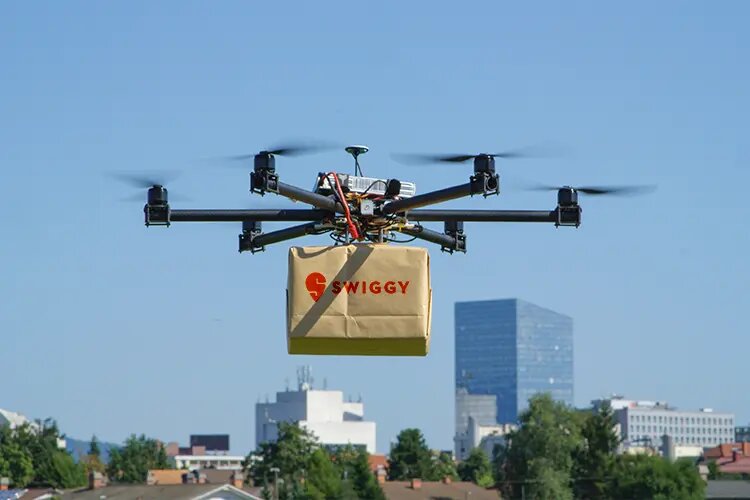
Swiggy has entered into a partnership with Garuda Aerospace to begin trial runs using drones to deliver groceries in Delhi-NCR (National Capital Region) and Bengaluru, Karnataka. The pilot project will assess the viability of using drones in Swiggy's grocery delivery service Instamart.
Swiggy teams up with Garuda Aerospace to begin trial runs using drones to deliver groceries
The drones will be used to replenish inventory between seller-run dark stores and a "common customer point." Swiggy, in a blog post, said that a delivery partner will then pick up orders from the "common point" and deliver them to the customer.
Swiggy has selected four firms for the trials and will launch the pilot in two stages. Garuda Aerospace will handle Bengaluru while Skyeair Mobility will take Delhi-NCR in the first phase. ANRA, TechEagle Consortia, and Marut Drontech will come in the second.
https://twitter.com/garuda_india/status/1520275261518151680
Garuda Aerospace, in a statement, said that the development came in response to the request of the Swiggy Proposal (RFP) that had floated a few weeks ago. "The food delivery platform says that they receive 345 registration in total, and select four."
Founder CEO of Garuda Aerospace Agnishwar Jayaprakash called this partnership a "dawn of a new era in drone deliveries" and added that with cities getting more crowded, startups like Swiggy have understood how Advanced Garuda Aerospace drones can play a role in urban mobility and logistics via air to cut down-time of deliveries.
The pilot project will assess the viability of using drones in Swiggy's grocery delivery service Instamart.
Currently, as per the company's statement, valued at USD 250 million, Garuda Aerospace is India's most valuable drone startup with plans to manufacture 1,00,000 indigenous made-in-India drones by 2024.
The company further said that it also provides a wide array of drone tech services that aim to increase efficiency and reduce costs.
Garuda Aerospace Manufacturing Facilities in Gurgaon and Chennai were recently inaugurated by Prime Minister Narendra Modi during the launch of the Garuda Aerospace Kisan Drone Yathra, a Monumental spectacle that saw 100 drones taking off simultaneously in 100 villages across the country.
Read next
India and Canada to operate more flights by expanding bilateral air service agreement
Radhika Bansal
05 May 2022
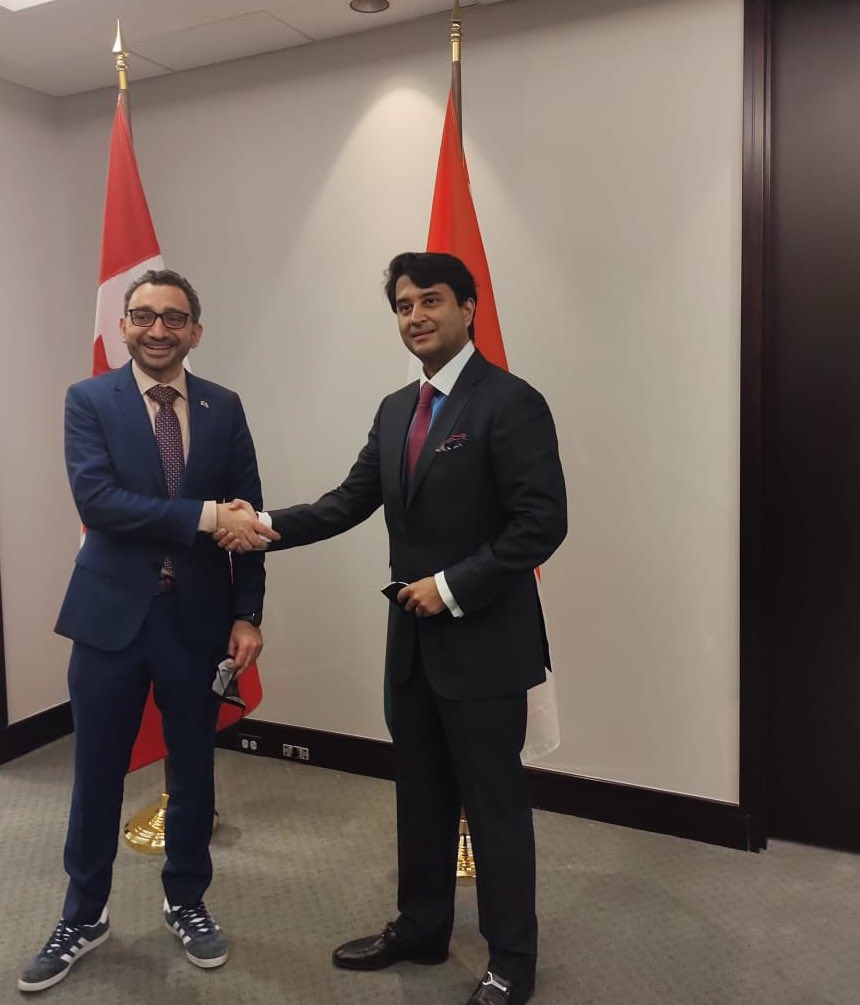
India and Canada on Wednesday, May 4 discussed the expansion of a bilateral air service agreement that will allow more flights between the two countries.
Union Aviation Minister Jyotiraditya Scindia, who is on a nine-day visit to the US and Canada, met Canadian Transport Minister Omar Alghabra.
"I personally thanked my counterpart for India’s help in repatriating Canadians stuck in India at the beginning of the pandemic,” Alghabra stated on Twitter after the meeting. Alghabra said he had a productive meeting with Scindia regarding issues of mutual importance to Canada and India.
https://twitter.com/OmarAlghabra/status/1521613161882963969
Canada has a huge number of people of Indian descent in its total population.
"We spoke about expanding the Air Transport Agreement allowing for more flights between the two countries. Further cooperation at International Civil Aviation Organisation (ICAO) on Annex 13 and other issues,” he mentioned.
He said he is looking forward to more conversations to open up travel between the two countries including flights to Amritsar.
India and Canada to operate more flights by expanding bilateral air service agreement
For the airlines of a particular country to operate international flights to another country, the two sides have to negotiate and sign a bilateral air services agreement, which decides how many flights (or seats) per week can be allowed to fly from one country to the other.
Once such an agreement is signed, each country is free to allocate the bilateral rights to its respective airlines. Even after such flying rights are allocated to an airline, it must have slots at both airports to start flight operations.
A slot is a date and time at which an airline’s aircraft are permitted to depart or arrive at an airport. The slots are allocated by a committee that consists of civil aviation ministry and regulatory officials, airport operators and airlines, among others.
At present Air India and Air Canada operate 29 non-stop flights per week between Canada and Delhi.
At present Air India and Air Canada operate 29 non-stop flights per week between Canada and Delhi. There are demands to start direct flights between Amritsar and Canada while Mumbai airport is looking to re-establish a connection with Canada.
However, the launch of new routes would also depend upon the geopolitical environment. In fact, Air Canada is suspending its thrice-weekly Vancouver-Delhi service from June because of restrictions on the use of Russian airspace.
Scindia is on an official visit to the US and Canada has met business leaders
Apart from the plan to increase air connectivity, the two ministers also discussed furthering technical cooperation in civil aviation. Scindia who is on an official visit to the US and Canada has met business leaders, visited manufacturing plants and also articulated India’s efforts on lowering carbon footprint in aviation.
ALSO READ - All Indian airports to be carbon neutral in near future – Jyotiraditya Scindia
“India is working towards making its airports carbon neutral shortly to emerge as a responsible player in the international civil aviation industry,” Scindia said.
India on the other hand committed in the COP-26 meeting in 2021 to achieve net-zero emissions by 2070 and is of the view that de-carbonisation efforts should be equitable for all countries.
Read next
Hyderabad International Airport to be operated by the GMR group for the next 30 years
Radhika Bansal
05 May 2022
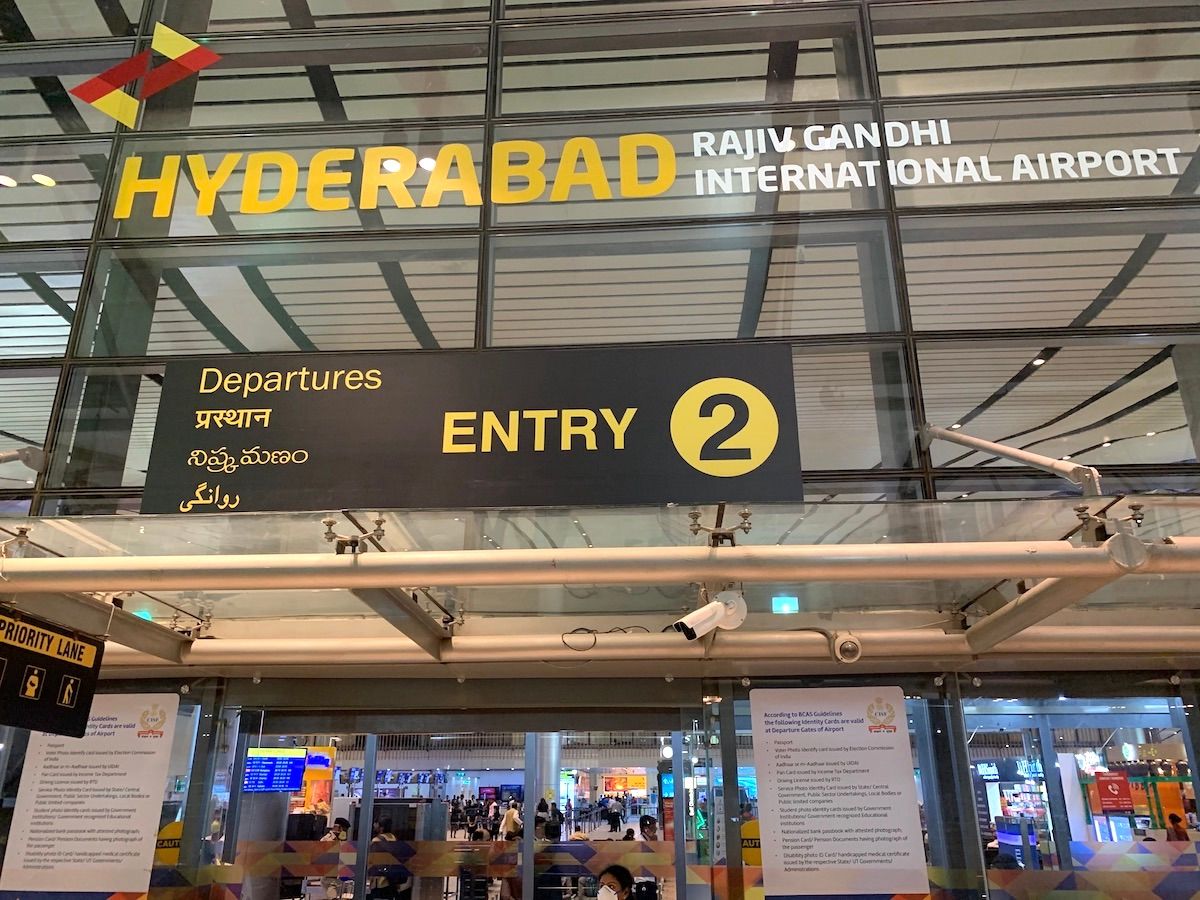
The term of the GMR Hyderabad International Airport (GHIAL) concession pact for the Rajiv Gandhi International Airport (RGIA) has been extended for another 30 years, the company informed the exchanges. Hyderabad airport is the fourth biggest airport in the country.
The airport, a step-down subsidiary of GMR Infrastructure (GIL), received a letter of confirmation from the Ministry of Civil Aviation (MoCA), it said in a filing on May 4. The extension is from March 23, 2038, up to March 22, 2068, for terms of the agreement dated December 20, 2004.
The airport was commissioned in a record 31 months and inaugurated in March 2008 with an initial capacity of 12 million passengers per annum (MPPA), which jumped to 21 MPPA before the Covid-19 pandemic in 2019. The present expansion will raise the capacity to 34 MPPA.
Hyderabad International Airport to be operated by the GMR group for the next 30 years
It is India’s first Greenfield airport under the public-private partnership (PPP) model and is currently the only Indian airport with an end-to-end digital passenger processing system, the company said.
Hyderabad Airport is now at the forefront of leveraging technology to deliver a seamless and enhanced experience to travellers. It is the first airport in India to introduce a unique e-boarding solution.
In terms of cargo, the airport can handle 150,000 tonnes of cargo per annum. The master plan envisages flexibility to increase ultimate capacity to more than 100 MPPA in phases.
Hyderabad International Airport is India’s first Greenfield airport under the public-private partnership (PPP) model
RGIAL is a “gateway” to the south and central India, the company said, adding that it has “established the city prominently on the global aviation map” and “continues to contribute to the prosperity, growth and all-round economic development of the region”.
GMR Group says it is the largest private airport operator in Asia and the second largest in the world with a passenger handling capacity of over 18.9 crores annually. It operates airports in Delhi, Hyderabad and Cebu in the Philippines.
It recently bagged the development and operation rights of Kualanamu International Airport in Medan, Indonesia. The Group is currently developing three greenfield airport projects — Goa and Bhogapuram airports in India and Crete airport in Greece.

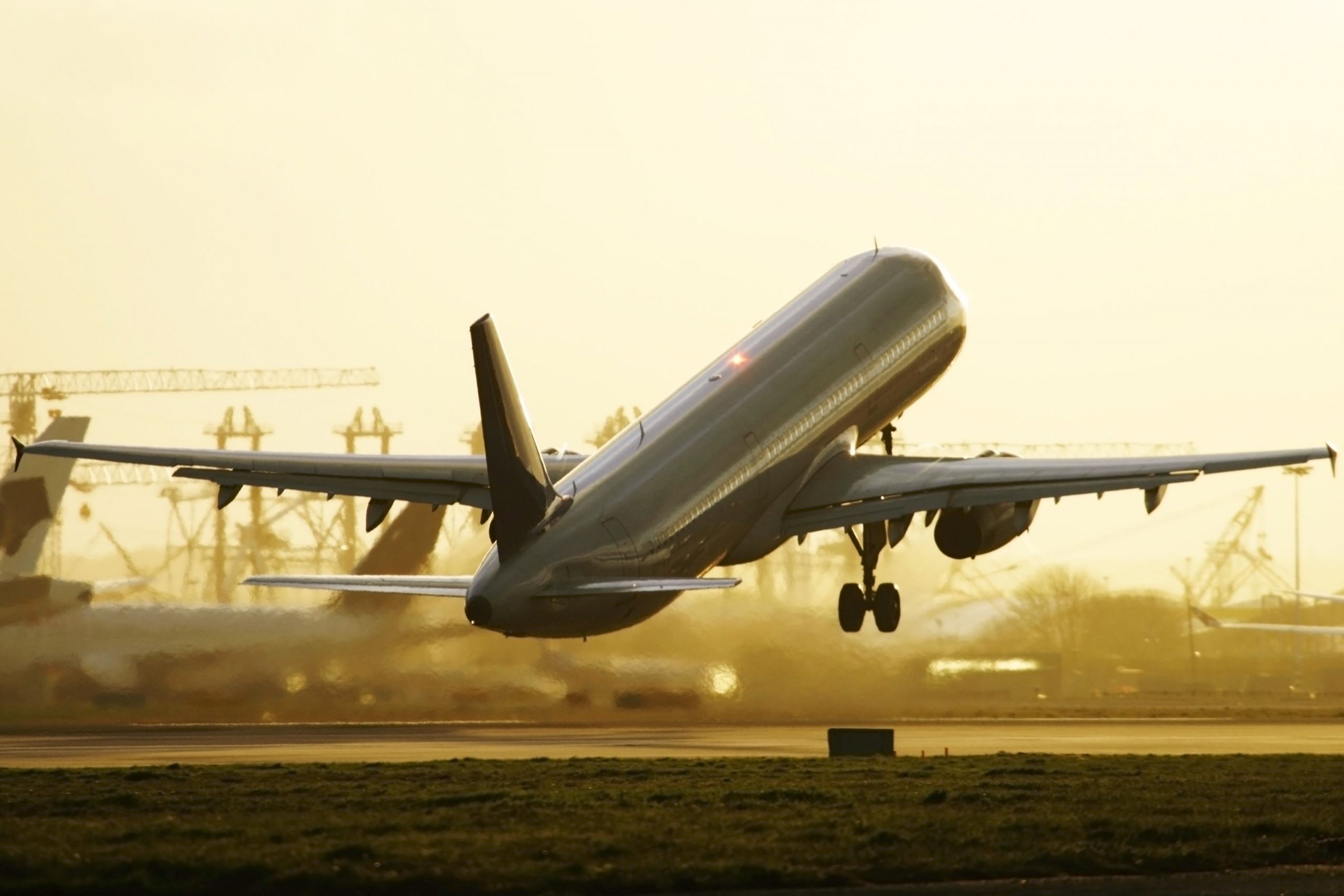

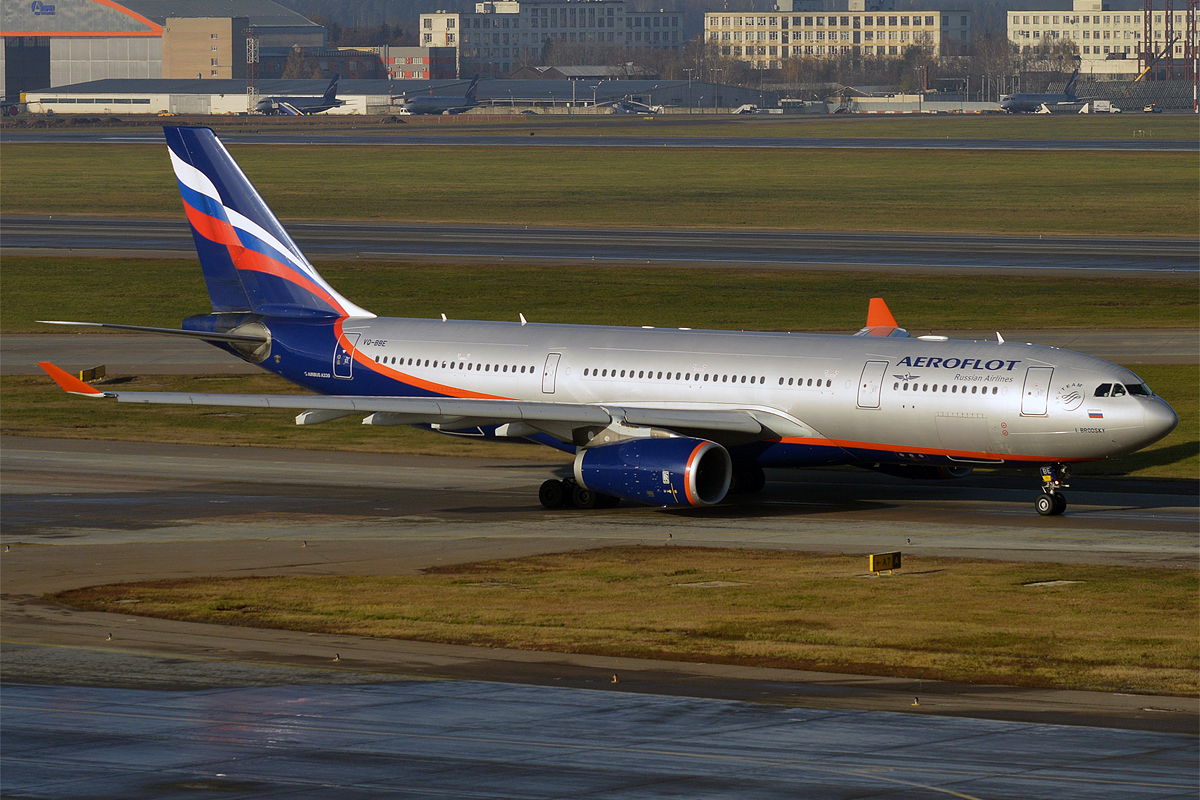
Comment